25 Nov 2024
Updated on December 13th, 2024
How Much Does It Cost to Develop Church Management Software?
Matthew Connor
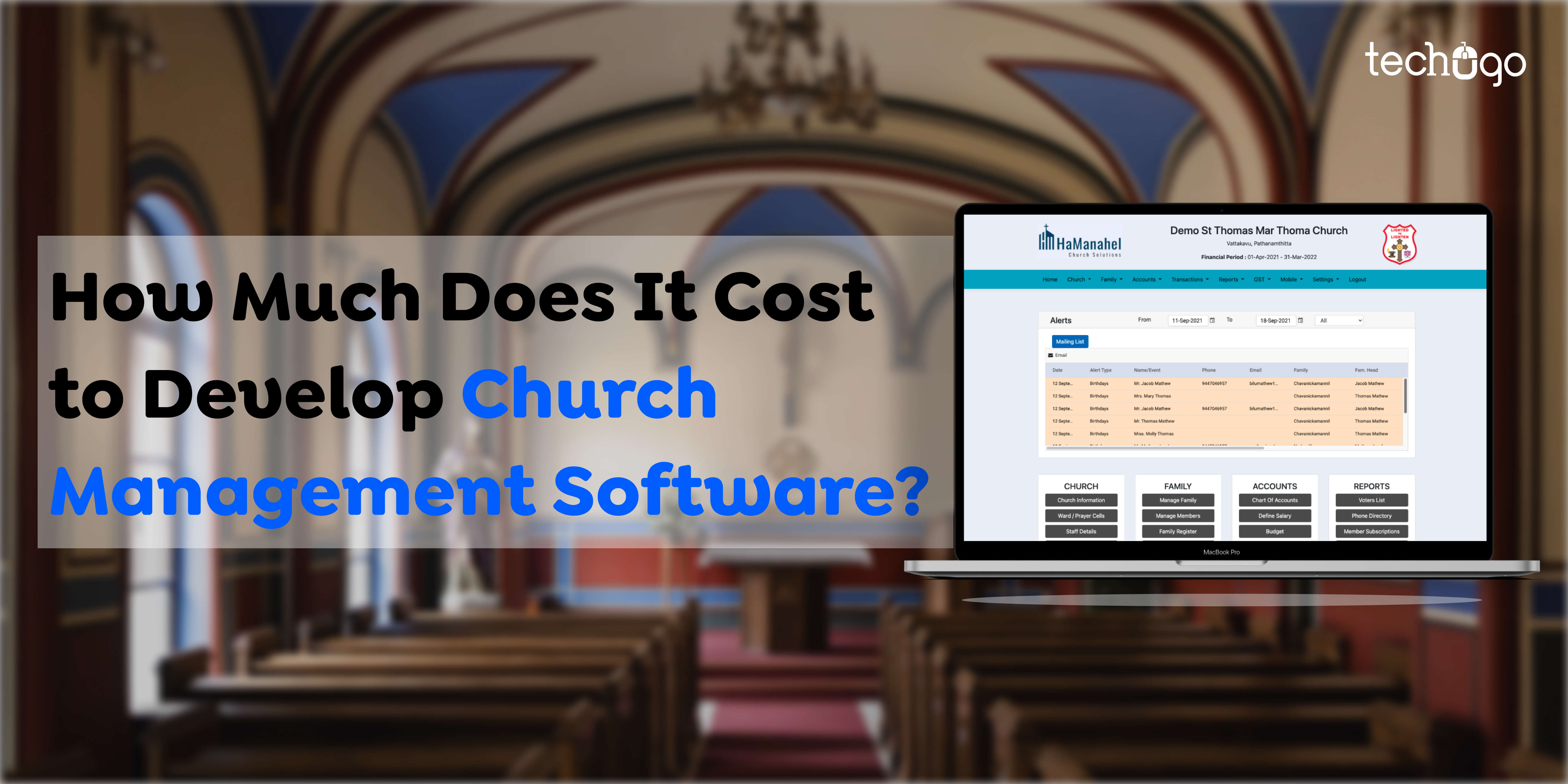
Church software is a powerful tool to simplify management, enhance communication, and enhance the worship experience. Tools like FellowshipOne, Pushpay, and Realm aid in church management and sermonshots, and Hootsuite and Buffer boost churches’ presence on social media. To present, ProPresenter and EasyWorship are the best choices.
Accounting software like QuickBooks and ChurchTrac simplifies finances, and website builders like Church Spring and Ministry Designs can help you create websites that are easy for churches. These tools are crucial for running a church efficiently and efficiently.
Are you seeking the most effective software in your Church to assist in managing your congregation?
If you’re among the people impacted by this article, it concentrates on the top church management software and church database software, church presentation software, and software for church accounting.
Let’s get started.
The significance of the software utilized by churches is more vital than ever in managing the day-to-day events that run through your Church.
Church management software was created to help church leaders simplify their tasks to handle church finances, communications, and other church-related activities.
This kind of software permits church personnel to manage the Church’s donors, tithes, church-related activities, volunteers’ schedules, and other details. It also aids church leaders in ensuring that their Church runs efficiently.
With the development of technology, the software can be customized to fulfill the precise requirements of every Church, resulting in greater efficiency and cost reductions.
When your congregation needs an easy or more advanced system that incorporates additional features like smartphones or web-based tools, options will fit into every budget and assist in completing your task efficiently and precisely.
Let’s get going by using a church management program.
What Exactly is Church Software for Church Management?
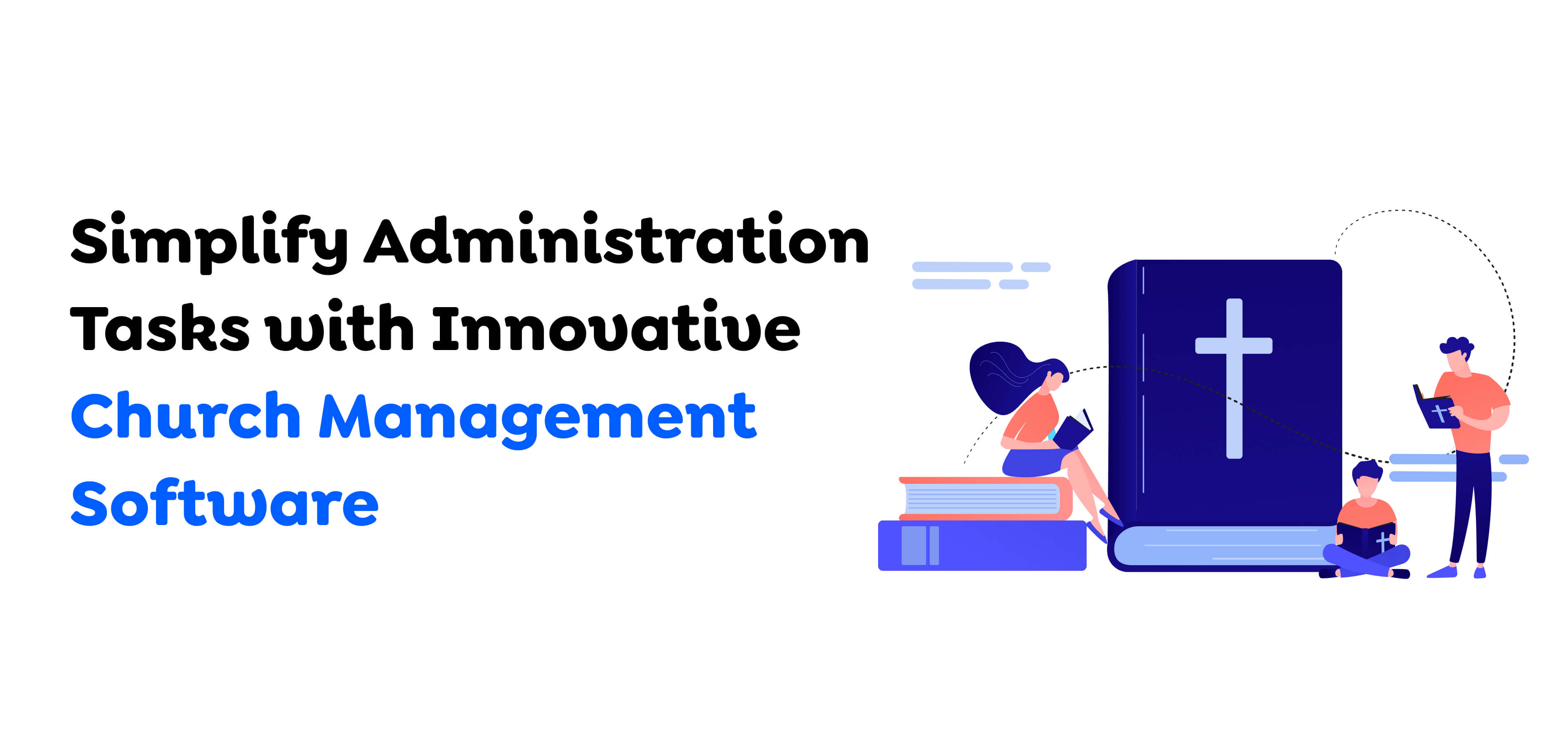
As we said earlier, church management software Canada can be described as a complete tool that will help you with time-consuming administrative chores.
This type of web-based church management system eases your burden because it handles multiple aspects, including an online website builder, a database to store all your contacts online, an Internet ions system, an online p, a payment system, event management tools, and much more.
To get to the finer details, here are the features you can anticipate from the software you use to manage your Church:
1. Instantly process online donations, payments, and fees
The possibility of setting up recurring donations so that members can automatically set up tithing
- A web builder tool that allows you to build and maintain your site
- The capability to create an online calendar of events and other sources
- A method for church members to sign up for online events
- Tools to automate invoices as well as emails and newsletters.
- Robust database software that allows congregations to find, sort, and keep track of their contacts
2. Analytics, financial reports, and summaries of membership
Church management software has many benefits for religious organizations! They allow your Church to do better with less effort so you can focus on providing services to your community. If nonprofit software can support any organization, you’ll want to select the one most compatible with your Church’s needs!
Some examples of the benefits that you can gain by using software for church management include:
- Manage the members of your congregation: With the help of database software for churches, you can quickly create profiles for the members of your congregation. You can also keep current with the membership form, include contact information and other information, and then keep track of each member’s information as required.
- Tools for communication. Create and send out emails or texts to specific segments of your community.
- Enhance church administration. An all-in-one solution can automate email and help you keep track of the congregation’s members, list events coming up on your site, or even create an entire website from scratch.
- Small-group events Registration. A church management system makes it easy to manage your events, such as marketing your events through emails and allowing your guests to register online for events.
- Management of donation and donor. Set up an online donation portal in your software for managing contributions. Then, it’s simple for you and your Church to make online donations securely!
Also Read : How Artificial Intelligence Software is Transforming Modern Business Practices
Benefits of a Church Administration System
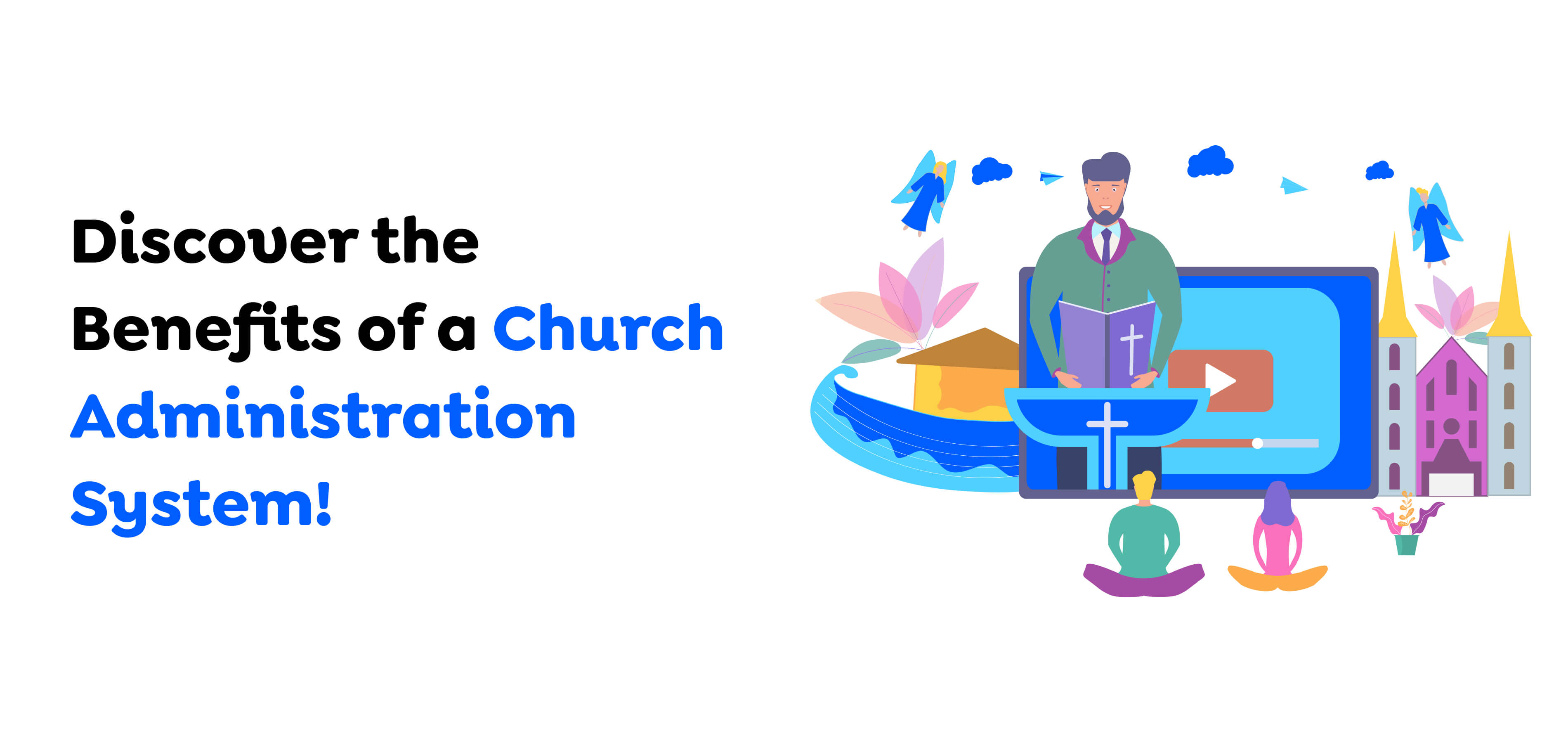
A well-designed ChMS can help your Church transform its operations and help it grow. The ideal ChMS can help digitize the Church’s papers. However, the top one will also allow staff members to aid the Church in managing the resources of your Church and help you become a part of the community you live in.
1. Administrative Efficiency
One advantage of the Church Management software is its time-saving, automated features. By tracking attendance, registration events, and effective volunteer scheduling, you can increase efficiency while allowing your staff to concentrate on crucial ministry tasks.
2. Resource Management and Tracking
The Scriptures instruct Christians or churches to be earth stewards. A ChMS gives real-time information about resource usage, helping monitor all aspects of physical and financial resources. These reports aid congregations in making informed choices about how to use resources most effectively and avoid unnecessary expenditures.
3. Monitoring Growth and Revenue
A ChMS records essential metrics like the number of members, attendance patterns, and donations. The information provided will provide you with a clear picture of the Church’s expansion and finances, allowing you to recognize patterns, anticipate the expansion of your Church, and effectively distribute your resources.
4. Streamlined Communication
Unorganized emails and insecure messages hinder your Church’s ability to develop connections with your community and give them information. Using the right ChMS ensures that your Church’s message isn’t being received by the community. You can send specific messages using automatic one-way text messages, effective push notifications, and many other options.
Also Read : How Veterinary Practice Management Software Boosts Clinic Efficiency and Care
Key Features to Look for in a Church Management System
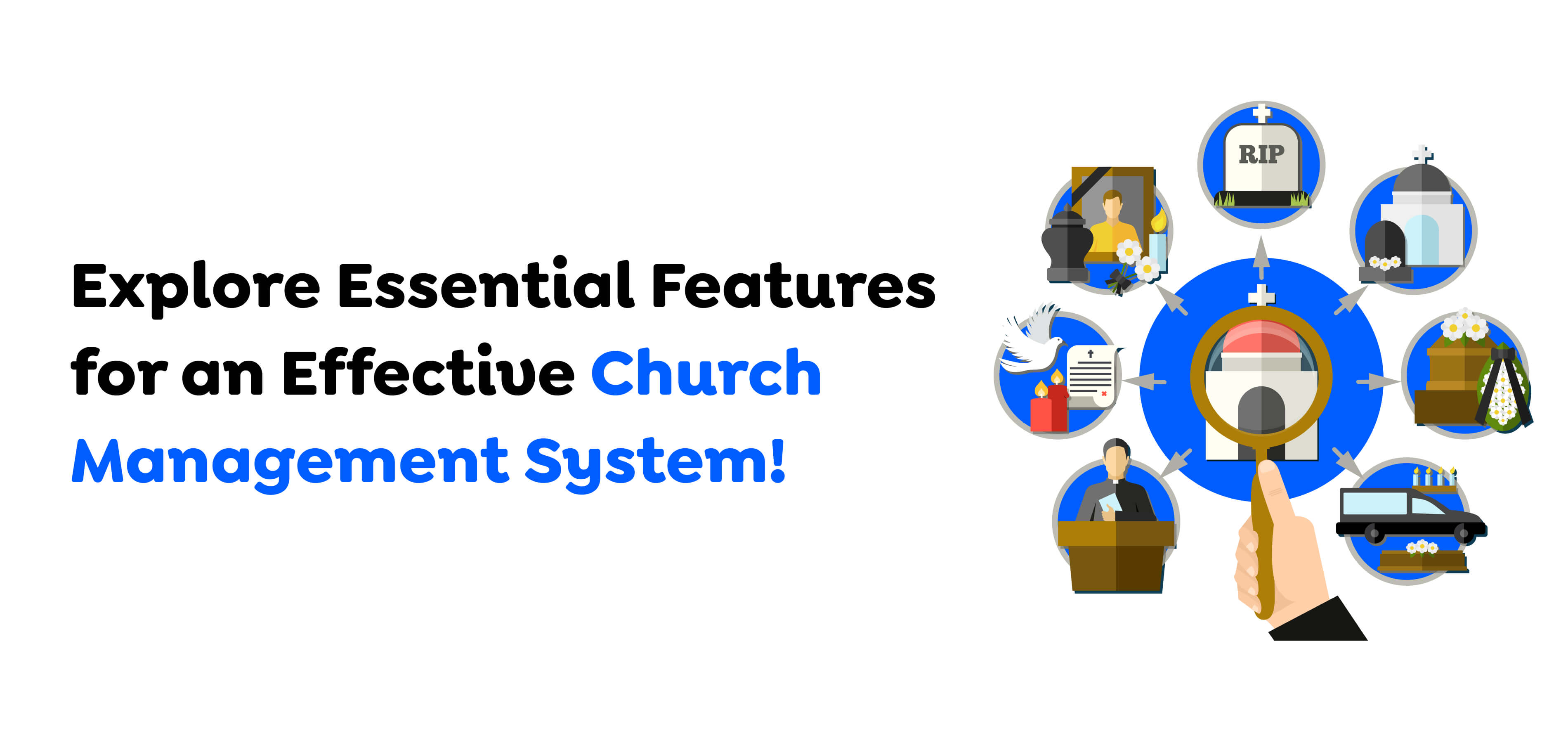
In the case of church management software, the best software can vary depending on a church’s specific needs and goals. Certain features are beneficial to every Church, regardless of size or geographical location.
1. General Features
Several fundamental features should every ChMS have to benefit your Church. One of them is accessibility and a user-friendly interface. Whatever their expertise level, each team member needs to be able to use the system without difficulty. Simple navigation and a simple design aren’t the only essential elements when implementing the ChMS to help you with your daily tasks.
But even the most technologically adept and user-friendly teams can face challenges. That’s why reliable customer support is crucial. Find a ChMS that offers a wide range of resources, prompt response times, and individual assistance when it is most needed.
Another essential element is accessibility. Today, the ChMS must be accessible anytime, from any location, and from any device. But, this convenience should not be at the cost of security. You and your fellow users can be at ease knowing that your ChMS has the highest quality and security measures to protect sensitive information.
2. Member Management + Attendance Tracking
A ChMS can only grant access to the information kept within it. In addition to the primary contact information, you’ll want to keep track of factors like donations and attendance so that you can view the most recent engagement metrics and be accurate.
If you plan to have guests present, the check-in feature is crucial. Check-ins are typically utilized to support children’s ministry. However, they can also be used to aid on occasion. After an event (a Bible study or a large Christmas celebration), you can determine the number of guests that attend. The data you collect can be used to keep a close eye on the general condition of your Church and its growth. A well-designed ChMS will assist you in this process with ease and let you track the changes over time and make informed choices about the future of your outreach and activities.
3. Giving and Donation Management
When it comes to donors, Your ChMS should do more than simply track and administer them. It should assist your employees with donors with features like segments, donor stages, and comprehensive financial reports.
Segments and stages in your donor journey can aid your Church to understand patterns and trends in giving. The outcomes of this segmentation can help you to understand your donors better and assist in communicating the message they need to comprehend.
Are they consistent in their giving and are interested in knowing the effect of their gifts? Are they not putting enough effort into their giving and need some supervision? These tools can assist your Church in building more solid relationships and creating an environment that encourages giving.
Accurate and reliable reporting is crucial to preserve financial integrity and accountability. Choose a system that streamlines the reporting process more easily and produces precise financial reports quickly. You and your team can utilize this information to identify more effective patterns and ways to finance your goals.
4. Event Planning and Calendar Management
The difficulty of managing a hectic schedule of events and maintaining an organized schedule is commonplace for many churches. Using an Event Management System, you can effortlessly plan events and manage the facilities and assets needed. Each event is placed on a calendar, and your staff is aware of any events at your Church.
Additionally, you can utilize your ChMS to encourage participation by inviting people to join and posting public calendars. Church members can be informed of scheduled events without putting in extra effort for their employees.
A ChMS will make managing your staff’s tasks easier and allow congregation members to participate, too! The best solution will connect your congregation with the essential events they must attend, such as checking in for the children’s ministry or RSVPing for your following Bible study.
5. Communication Tools
Communication within the Church is the method you use to convey the gospel in various ways, be it on stage on Sundays or via email on Wednesdays. It’s not only you trying to communicate with your congregation; their families, friends, colleagues, and billions of companies are competing to get their attention. Thus, a range of tools for communication in your ChMS can help your congregation keep you connected.
These tools—ranging from apps, texting, automated alerts, and scheduled notifications—should allow for targeted communication, enabling you to reach specific groups within your congregation, whether it’s a youth group, Bible study class, or new visitors. Your congregation will receive the information it needs through a variety of channels.
In addition, these tools need to allow for individualized communications. Each message might not be appropriate for everyone. The possibility of delivering specific messages via your ChMS to specific groups ensures that each message is sent to the right audience.
6. Volunteer and Ministry Management
Volunteers are vital to various activities at the Church you belong to, including welcoming newcomers and even helping to manage technology used during sermons. This is why you need online church management software that will aid you in managing your volunteers and ministry.
If you’re seeking capabilities to manage volunteers, you’ll require a solution that addresses all the major issues of managing volunteers, like scheduling and locating people keen on a specific program, logging their participation, and streamlining communication. This will help you recognize each volunteer’s contribution and manage their time.
In the same way, tools for managing ministry can aid leaders in keeping up-to-date calendars of events and profile pages of their members. To ensure the Church’s ministries run well, you can design active profiles, modify information, or create specific fields to provide more details.
Also Read : Why Your Business Needs Manufacturing Inventory Management Software for Growth?
Steps to Develop a Church Management Software Like ChurchTrac and PushPay
A process used for church development software like ChurchTrac and PushPay is extensive and is comprised of the following steps:
1. Analyzing Requirements
Analyzing needs is a primary stage. This requires a clear understanding of the exact requirements and the features required in the program for event management, for example, or the monitoring of donations.
2. Design and Architecture
The second part concerns the structure and design of mobile applications. Programmers create the application’s user interface, user experience, and technical architecture. This stage ensures that the program is simple to use and fulfills the Church’s needs.
3. Development
The third step is where the actual work begins. Developers develop codes to achieve the intended capabilities. This step is the most important and lengthy stage of development for church management software.
4. Testing and Deployment
The fourth stage is testing and deployment. The software developed undergoes a rigid testing process to determine and fix any issues or flaws. After testing, the software is verified for reliability and efficiency, and then the Church can use it.
5. Maintenance and Updates
The final phase includes maintenance and updates. After the deployment, the software requires continuous maintenance to ensure proper operation. This involves enhancing security, introducing new features, and helping users.
The development of church administration software is a complex process. To meet churches’ particular requirements, thorough planning, professional development, and ongoing maintenance are required.
Also Read : The Complete Guide to Developing Clinical and Patient Decision Support Software
Factors Affecting the Cost of Developing a Church Management Software Like ChurchTrac and PushPay
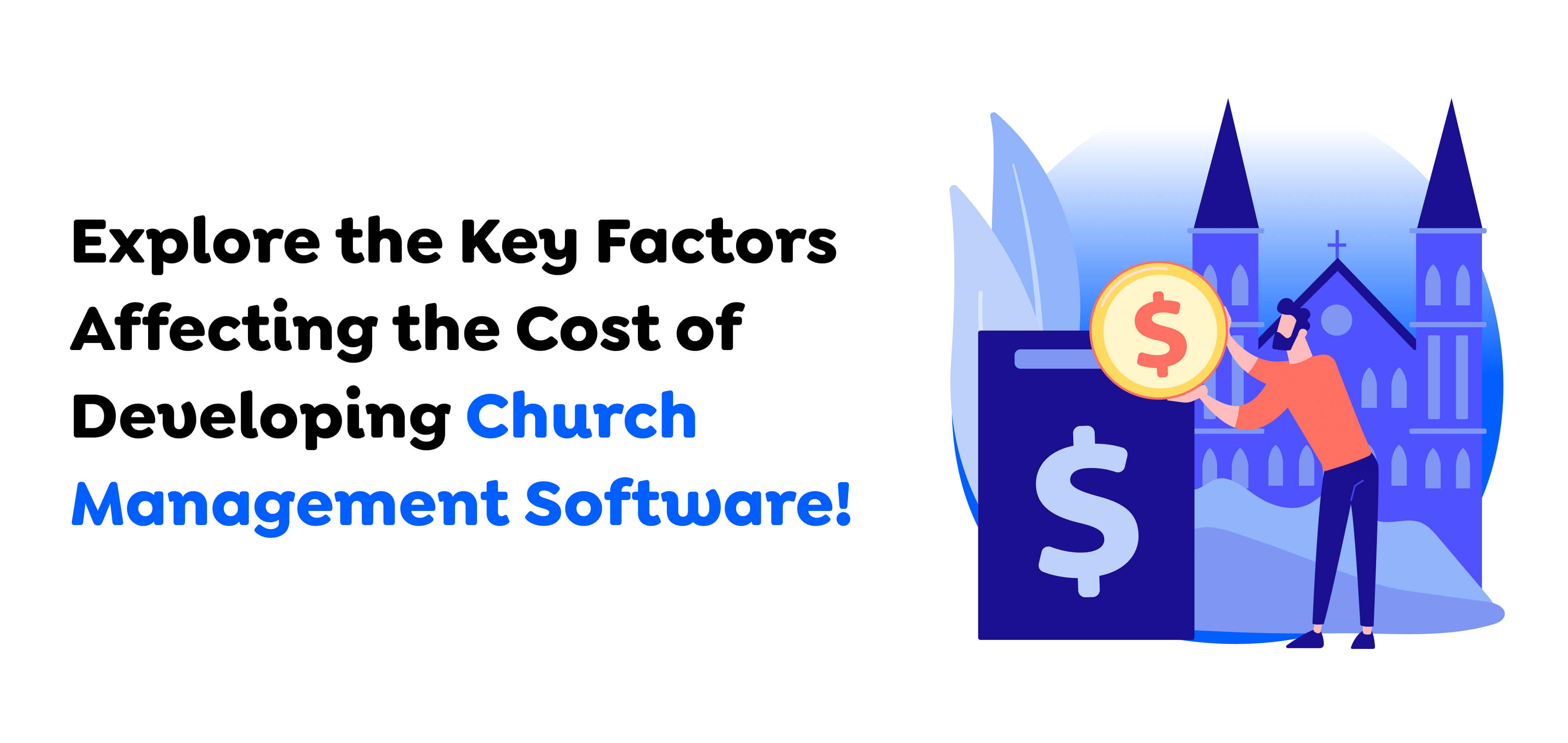
Various cost-effective aspects are involved in developing software for church administration, like ChurchTrac or PushPay. The parameters can vary depending on the features planned and the application’s complexity. For instance, knowing how much PushPay costs can affect the total budget. These are the main elements that affect the development costs of church apps.
1. Feature Complexity
The level of complexity of features significantly affects the total cost of developing church management software. Basic features such as member databases and event planning are usually easier to set up. However, church management software development costs increase as the requirements are more complex, including adding live streaming services, intricate donation management systems, and mobile application integration.
These more advanced features require more time and resources for development, which can impact the budget. It is crucial to balance the complexity of these features against their user-friendliness and practicality since this balance directly impacts the initial development costs and ongoing maintenance costs.
2. Regulatory Compliance
Making church management software complies with essential rules and regulations to secure all information. Imagine building a sturdy and secure shield that protects every detail of donors and church members.
One of the most important rules we have to adhere to is GDPR, a set of rules regarding how we manage information. Consider it an instructional manual on how to protect individuals’ privacy. This is extremely important, particularly if the program is being used in different countries.
To ensure that no one can sneak into the premises and gain access to sensitive information, we must create robust security measures. This is like installing locks on every door and window. It also means keeping your data secure by encrypting it (which could be akin to making it an encrypted code) and deciding who can access what, much like using different keys for various doors.
However, keeping this security in place will cost money. It’s similar to buying a high-quality security device for the home; it’s vital for protection, but it’s expensive. And it’s not a once-only issue; we must constantly review and update our security systems to keep up with new regulations or threats.
Knowing and adhering to these guidelines is similar to promising to secure the privacy of everyone’s data. It’s not only about creating software but also about protecting it for the long term.
3. Integration with Third-Party Software
Imagine creating a handy church tool, such as a digital assistant. To make it more efficient, we’d like it to integrate seamlessly with other tools that churches already utilize, such as payments, emails, and social media.
This collaboration between our application and other tools is called “integration.” It’s like making sure that our digital assistant is able to communicate with other tools within the Church. However, the problem is that it’s not always simple. Sometimes, it’s like teaching our assistant to learn a new dance or language based on which tools we use.
The more complicated these languages or dances are, the more effort it will take, which will cost more money. Suppose we wish your digital assistant would become most effective with popular payment tools like email, payment services, or social networking sites. In this case, it is essential to consider it in advance and create additional programming to ensure they go seamlessly.
But there’s more! Once you’ve established friendships, there could be a regular fee to keep them in touch. It’s similar to paying a cost to ensure that our companion talks and dances with other devices.
It’s about ensuring that our digital assistant is the most effective aid to churches and works effortlessly with their preferred tools. Yes, it requires some additional expense and effort; however, getting an efficient and effective management tool is well worth it!
4. Location of the Development Team
The geographical location of the developers plays a significant part in the cost of developing software for church management. Development costs may vary greatly depending on the area of the team. Hiring developers from regions with lower living costs could reduce costs.
However, due to different time zones, this could impact the project’s coordination and communication. However, local developers may provide greater synchronicity and a better understanding of the specific requirements at an additional cost.
It is crucial to balance cost efficiency with efficient communication and an understanding of local markets. Every choice affects the overall budget and the quality of the final software.
5. Reporting and Analytics Requirements
Okay, let’s say your congregation has access to a super tool that not only keeps things sorted but also gives you interesting reports on what’s happening, such as who attended events, how finances are performing, and a lot more.
Making our superhero software talk in detail will require clever techniques, such as a magical spell for numbers and special techniques to grasp the nuances. Imagine it as making the magic potion. It requires expert magicians (developers) to ensure it’s working flawlessly.
But here’s the deal: The more specific and useful we would like these tales to be, the more tips and techniques will be required, and that will require more effort and expense. This isn’t just a regular old gin; we’re developing an extremely powerful elixir that will display the financials of a membership, trends in membership, and even event attendance information.
Making them understandable is similar to putting a user-friendly label on our beverage so everyone in the Church can take advantage of it without needing special knowledge. However, adding a bit of magic, such as real-time updates, is more complex and expensive due to the need for advanced technology and regular checking-ins to ensure everything is up-to-date and fluid.
It’s all about deciding how amazing and precise we would like our superhero’s tool to be and then planning for the perfect potion and wizards to achieve it without costing the earth. Therefore, discussing budgets is like ensuring you have the right amount of gold to make the most magical potion for the Church.
6. Support and Maintenance
Support and maintenance are essential elements that affect how much Pushpay or ChurchTrac development costs. After the software has been launched and supported for a long time, it will ensure its seamless operation. This includes dealing with technical issues, updating features, and ensuring security is maintained. The amount of work and frequency of the maintenance tasks will significantly affect the overall maintenance costs.
Support for users, like troubleshooting or training for church employees, is vital. While essential for user satisfaction and the longevity of software, however, these services can add to the ongoing costs. A reliable and effective support system and maintenance are essential to the success of software, indicating the financial commitment that will last beyond the initial phase of development.
Based on the above factors, the church management system development cost could range from $25,000 to $300,000.
Also Read : Renewable Energy Software: Transforming the Future of Sustainable Energy Practices
Conclusion
In conclusion, designing church management software in the spirit of industry leaders such as ChurchTrac and PushPay requires careful consideration of many elements. The price, which ranges between $25,000 and $300,000, depends on the level of complexity of the feature and regulatory compliance, integration with third-party companies, the development team’s locations, reporting requirements, and ongoing support. Essential features such as a database of members, donation tracking events management, communication tools, and financial reporting are vital to efficient operation.
Techugo is recognized as the perfect Software development Company, offering expert security, user-friendly design, and unbeatable post-launch service. The process involves analyzing requirements, defining an architecture, development testing, deployment, and continuous maintenance. When you choose Techugo, you ensure an easy and effective church management system tailored to your church’s specific requirements.
Get in touch with us today to learn more about how our church management software can transform your church’s operations and enhance community engagement!
Get In touch
We are excited to here from you and let’s start something special Together. Call Us for any inquiry.
Write us
sales@techugo.caJust a call away
About you




